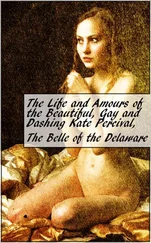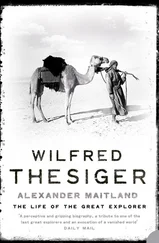Mrs Stanshall was born Eileen Monica Prudence Wadeson in Kilburn, London, on 5 February 1911, and lived at 65 Salisbury Road in nearby Willesden Green. Her father was John Thomas Wadeson: ‘In my father’s family every boy child was called John Thomas or Thomas John, which was a tradition which went back many years. There were no fancy names in those days!’ she says. He was a fireman who served in the Royal Navy during World War One, following which he drove an ambulance during the great influenza epidemic that ravaged Europe in 1919. ‘Everybody was down with the ‘flu and dying of it,’ recalls Eileen. ‘They asked for volunteers to man the ambulances. I was about eight years old, and at school, and you’d see the ambulances passing all day long.’
The family were accommodated in a fireman’s house which seemed a place of comfort and security amid the crisis. Eileen recalls children and adults falling victim to the killer epidemic in every street in the neighbourhood, though her family was unscathed. She was the fourth child of Mary Beatrice (neé Douch), who had left a convent to be a nurse, just about the only work a girl could get in those days: ‘My mother and all the children were Catholics and Dad wasn’t. But if there were any dances on, he’d go with her to the church hall.’
Eileen went to school in Willesden Green and later went to work for the Address-O-Graph company, which made customized metal address plates for small businesses. She quickly grew tired of the endless clanking noise of the machinery. Aged eighteen she went for a job at a Catholic church furnishers called Burns, Oates and Washbourne, in the City, where she did office work. She remained single until her late twenties, when she went on a trip to a holiday camp at Caistor, near Great Yarmouth. Such holidays were very popular with young people as an alternative to staying in a staid old hotel; indeed, after World War One, the camps were built especially for teenage holiday-makers. The young man whose heart Eileen caught was born Vivian George Stanshall in 1911. By the time his future wife met him, he had a different name.
‘His mother liked “Vivian”,’ explains Eileen. ‘She had been reading a novel and the hero’s name was Vivian, so that’s what she called her baby. When he got older he thought it sounded sissy, so he wouldn’t tell anybody his real name.’ Vivian changed his name by deed poll to Victor and was known as Vic.
Vic chanced upon Eileen at one of the many dances at the camp and was immediately smitten. ‘I had bright ginger hair and I was always dancing,’ says Eileen. ‘I passed him as I went into the dance hall and he was by the doorway. I didn’t even look at him. When I sat down he came over for a dance. I wondered why he wanted me, because my friend Rose was a beautiful girl. But he never left me alone that whole evening. We had one dance after another. From then on until the day he died he never took his eyes off me.’ Vic was good-looking, six-foot-two and, although he wasn’t a Catholic like Eileen, he had a commanding manner that immediately impressed his sweetheart. He was very sporty and fit, with a twenty-inch neck and huge biceps. His passion was playing football and he had faultless manners. ‘He had a very nice voice. His mother made sure that all her family spoke nicely, because the old man didn’t. I could quite see her point of view. But Vic could mix with anybody and he was very well liked. Some men will put it on, but I noticed he always spoke in exactly the same way as the men he was dealing with.’
The relationship blossomed and Vic took his girlfriend to meet the family. His father, Thomas Henry Stanshall, was a music dealer who sold sheet music and 78s in a Walthamstow shop. The Stanshall name goes back to the Crusades, and has a number of meanings: a stone hall, a wall of stones or, going back to Saxon times, St Ann’s Hall. The Stanshalls are now a rare breed. Vic himself never looked into the history of the name, but his two sons – Vivian and Mark – took up the challenge and were bombarded with letters from Americans writing to say their name was Sandhill. They all wanted to know if they could be any relation and Vivian told his brother, ‘You answer those in case they want to breed with us.’
Vic had two sisters and was spoiled as the youngest and the only boy in the family, growing up to be the traditional sort of man who expected his tea ready for him when he got home from work. His mother was ‘a tall thin woman’, remembers Eileen, ‘who looked as though she needed a good meal.’ Vic’s dad made a less favourable impression on the girl: ‘Vic’s father was in the army and he was very strict. There was no love in that family, somehow.’ Vic emulated his father in being unemotional: he was happiest out with the lads and messing about with cars. ‘There are pictures of him with a souped-up Austin 7,’ says Mark Stanshall, ‘and he had a rather nice three-wheeler Morgan with pipes coming out of the side.’
Eileen and Vic were married, after a five-year courtship, at the Church of the Sacred Heart of Jesus in Kilburn on 19 June 1937. Vic was twenty-seven and his bride a year younger. The groom’s family were then living in Walthamstow, on the north-east outskirts of London. The newlyweds set up their home nearby; by this time Vic was a financial secretary, working his way up to become an office manager.
On the outbreak of war in September 1939, Vic Stanshall joined the RAF. He was too old to be a flyer and went into administration, where he rose to the rank of lieutenant. ‘He was having a lovely war because he was teaching the guys self-defence and playing football,’ says Mark Stanshall. ‘When they found he had some sort of brain, they put him into ciphers and he worked on decoding. God knows what he actually did. He wasn’t at Bletchley Park, but it was something similar.’ The family moved from London to avoid the Blitz and their first child was born in Shillingford, Oxford, on 21 March 1943.
The birth was a difficult one. Eileen was in labour for seventy-two hours and, as she told her son years later, ‘You nearly killed me, now that’s enough of that! [The nurse] brought me three babies, two with tiny little heads and you with a great big whopping head and ginger hair. I said, “Ooh, no, I’ll have one of those little ones.” She said, “I’m afraid you’re stuck with it.”’ 3
They named the boy Victor Anthony Stanshall, Victor being the ‘manly’ name his father had wanted himself. Eileen always used the boy’s second name, Anthony. When the child himself learned to speak, he found it difficult to say ‘Anthony’, which came out as ‘Narnie’. The pet name stuck, at least until Anthony was old enough to reject both his parents’ choices in favour of his father’s original name, Vivian. His older friends called him ‘Vic’ throughout his life, as did his first wife and his own son. His second wife, and the daughter he had with her, both called him Vivian. The one name by which he disliked being addressed was ‘Viv’, and he corrected people if they tried it. But to fans of the Bonzo Dog Band, he was always Vivian. It was not an act of rebellion to take his father’s rejected name, says Mark Stanshall, ‘it was affectation. He didn’t have another Vivian in mind. It just sounded good.’
It was not until September 1948 that the Stanshalls had another child, Mark. Perhaps because of the five-year age gap, the boys ‘didn’t mix and they were never really friendly’, in Eileen’s words. Mark Stanshall agrees. ‘There was always that jealousy thing. He was the first born and he and Ma had a fairly idyllic life during the war when they were living down in Shillingford.’ They lived in a bungalow in the beautiful Oxfordshire countryside.
‘The first two years of my childhood were wonderful,’ Vivian recalled. ‘Just me and Mum and me and my voices, evacuated from the East End.’ 4He remembered how the local cows would wander into the kitchen and his mum, broom in hand, would shoo them out. At the bottom of the long garden were the upper reaches of the River Thames. Paddleboats sailed past, filled with soldiers on leave, taking their girlfriends on bitter-sweet farewell cruises. Young people called to each other across the river.
Читать дальше












